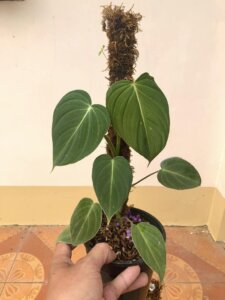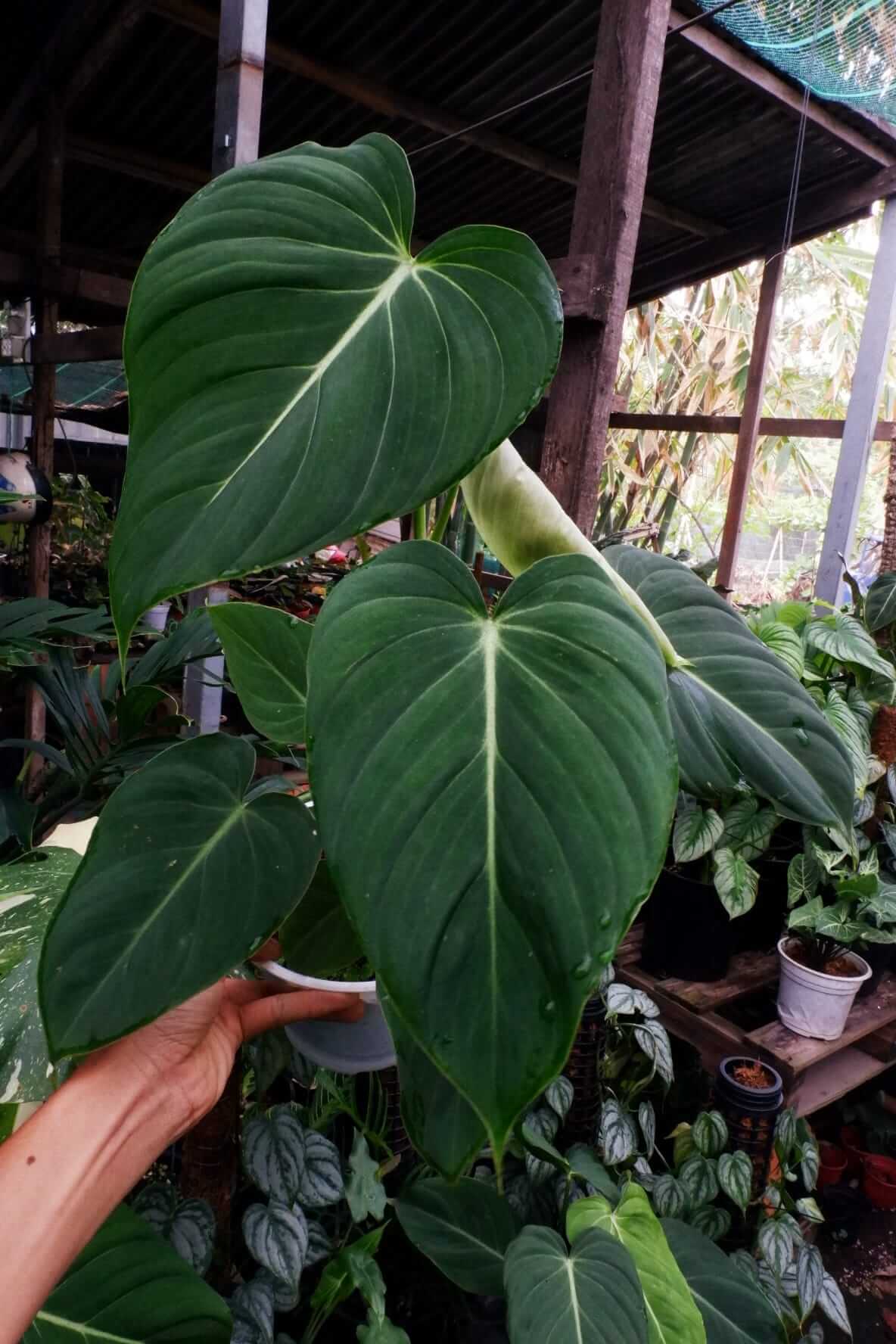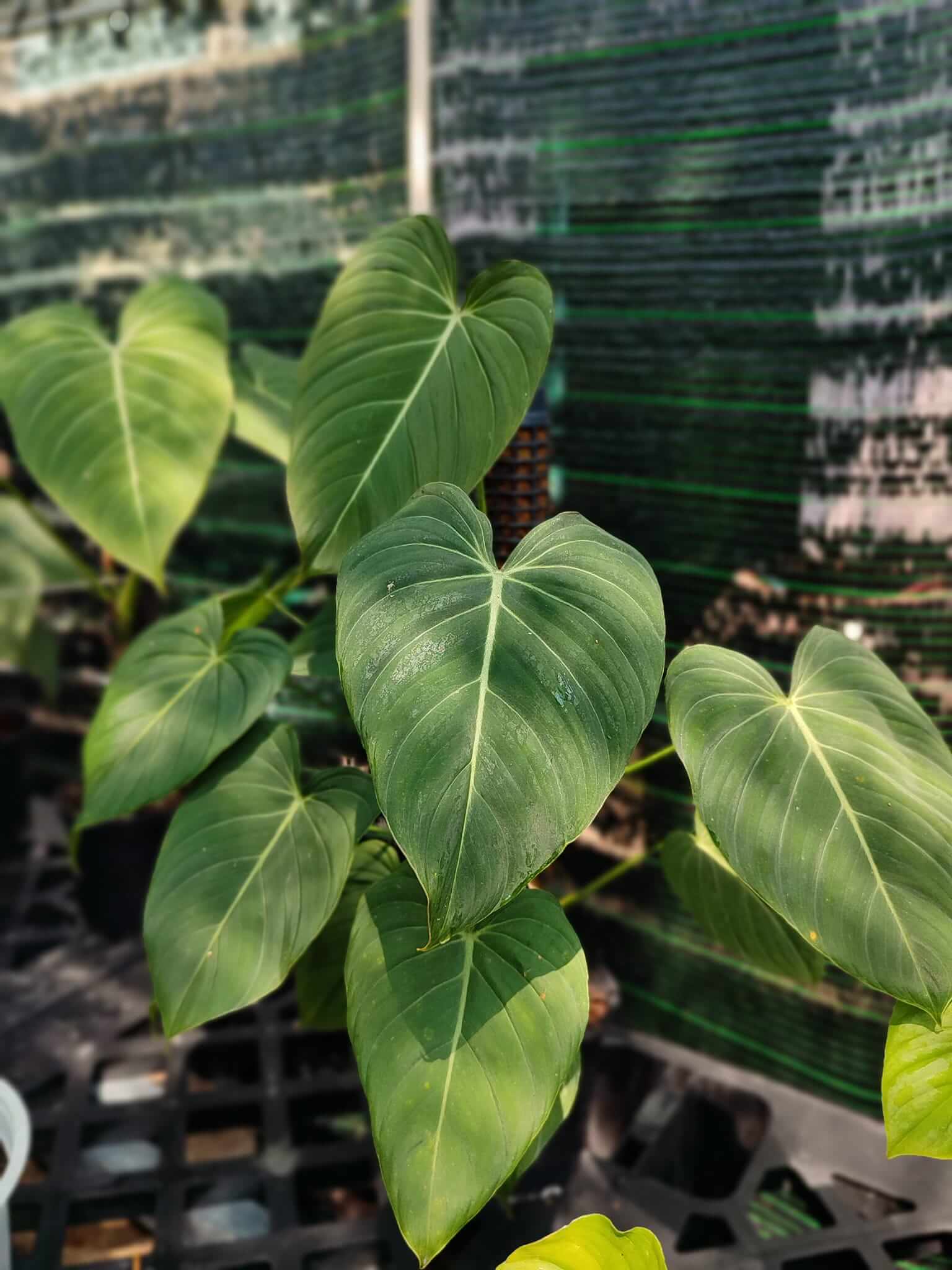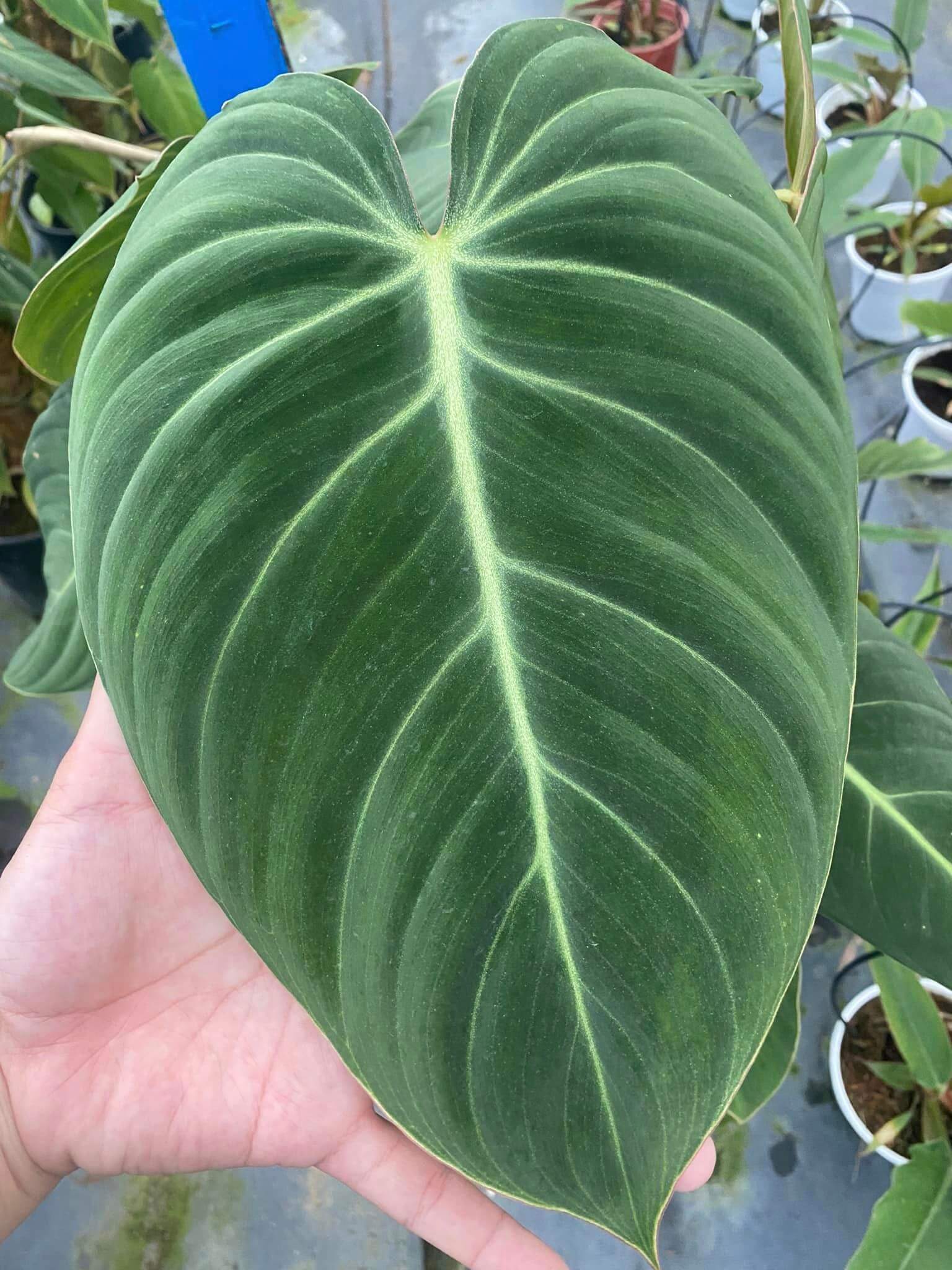Basic Information
The Philodendron Glorious is a popular exotic hybrid known for its stunning foliage and vibrant appearance. As a semi-climbing aroid, it can be grown as a floor plant. The Philodendron Glorious is a hybrid of the Melanochrysum and Gloriosum varieties, and its features continue to develop as it matures.



Light
Philodendron Glorious is a plant that needs bright, dappled sunlight to thrive and keep its foliage healthy and green. It must be provided with plenty of bright, indirect light to ensure its good health and growth. A west- or east-facing window with morning sun and filtered afternoon light is ideal. Too much direct sunlight can cause the leaves to burn and result in limp growth. On the other hand, dim conditions can make this slow-growing plant leggy and poorly developed. If there is insufficient natural light, you can consider supplementing it with artificial growing lights. However, avoid exposing the plant to direct sunlight as it may harm the leaves.
Water
To keep your plants healthy, it’s important to water them regularly, but not too much. In hot summer days, watering once or twice a week should be sufficient, whereas plants require less frequent watering in winter. Before watering again, make sure the top 2-3 inches of soil are dry. Overwatering can lead to root rot, so it’s important to avoid it. Checking the soil moisture regularly is key to determining when your plants need water.
Soil
If you’re planning to grow a Philodendron Glorious plant, you’ll need a well-draining and well-aerated potting mix like an aroid mix. You can add some extra perlite to the soil to reduce the risk of root rot. Perlite can absorb excess water and release it slowly, thus keeping the soil moist. The best pH level for planting Philodendron Glorious is between 6.5 to 7.5. Add some horticultural charcoal to the soil to replicate the plant’s natural habitat. Charcoal has antibacterial and antifungal properties that can help protect the plant from infections by eliminating toxins and improving the soil quality.
Temperature
This plant thrives in temperatures between 65-80°F (18-27°C). It can withstand mild temperatures but should be protected from frost. Adjust the plant’s position indoors in extreme temperatures to avoid direct heat sources or cold drafts.
Humidity
Philodendron Glorious thrives in environments with high humidity levels, ideally between 60% and 80%. However, excess moisture can cause problems like leaf yellowing. If the air is dry, you can use a humidifier to maintain appropriate humidity levels. If you’re having trouble tracking the moisture levels, you can use a moisture meter. Additionally, you can keep the plant near other plants and provide them with a pebble tray filled with water to keep them humid.
Fertilizer
To keep your Philodendron Glorious plant healthy and well-fed, it is recommended to fertilize it once a month during the spring to fall season. You can use a high-quality, balanced fertilizer with an NPK ratio of 20:20:20 or 1:1:1. A balanced fertilizer that contains Nitrogen, Phosphorus, and Potassium will provide the necessary nutrients for your plant to thrive. Be sure to dilute the fertilizer to avoid leaf burn, and choose either slow-release or liquid types. Overfeeding should be avoided to prevent any harm to the plant.
Growth Rate
This plant grows at a slow pace, producing one to two leaves every month. The leaves can reach a length of up to 20 inches and a width of 8 inches. Providing the plant with sufficient time and appropriate conditions for healthy growth is crucial.
Pet Safety
Like other Philodendron plants, Philodendron Glorious is likely toxic to pets and humans. Keep it out of reach of children and animals to avoid risks.
Grow in Semi-Hydro
- Philodendrons, celebrated for their lush foliage and adaptability, thrive in semi-hydroponic systems such as LECA/Pon, thanks to their resilient root systems and preference for consistent moisture.
- Shifting a Philodendron to a semi-hydroponic setting works well using a Nutrient Stagnant Wicking (NSW) method, providing a stable and effective environment for growth.
- Within the LECA/Pon environment, Philodendron roots adapt swiftly, effectively managing any early challenges in adapting to the NSW system.
- For nourishing Philodendrons in semi-hydro systems, a nutrient solution with a concentration around 800-1000ppm is optimal.
- Philodendrons are versatile in adapting to a range of temperature and humidity levels, making them ideal for various indoor settings.
- Regular care involves keeping an eye on the water level in the reservoir and periodically flushing the system to ensure the Philodendron’s healthy and consistent growth.
- If your Philodendron is a climber, it’s a must to look at our Moss Pole guide to have a proper set-up.
Tips
- Utilize trellises or moss poles for supporting the plant’s upward growth.
- Trim dead or dying leaves occasionally and pinch out new leaves at the top for height control.
- Monitor for pests such as aphids and spider mites; treat with neem oil or insecticidal soap as needed.
- Add organic matter to the soil to improve its texture and drainage capabilities.
- Ensure good plant hygiene, regulate watering, maintain air circulation, and use fungicides if diseases appear.
By paying attention to specific care aspects, you can keep your Philodendron Glorious healthy and vibrant. These tips address unique challenges in caring for this plant.
Happy planting! 🌱


